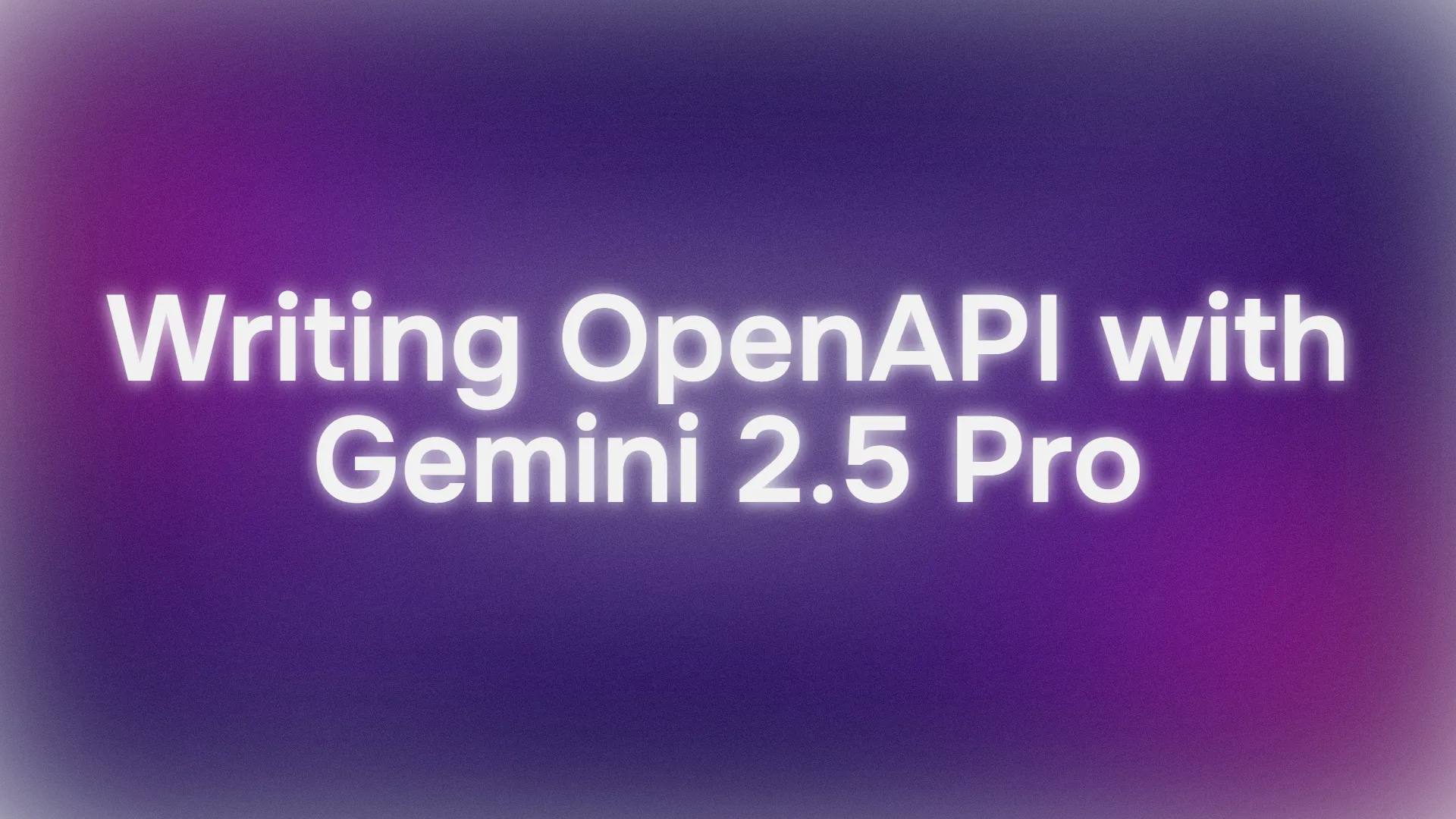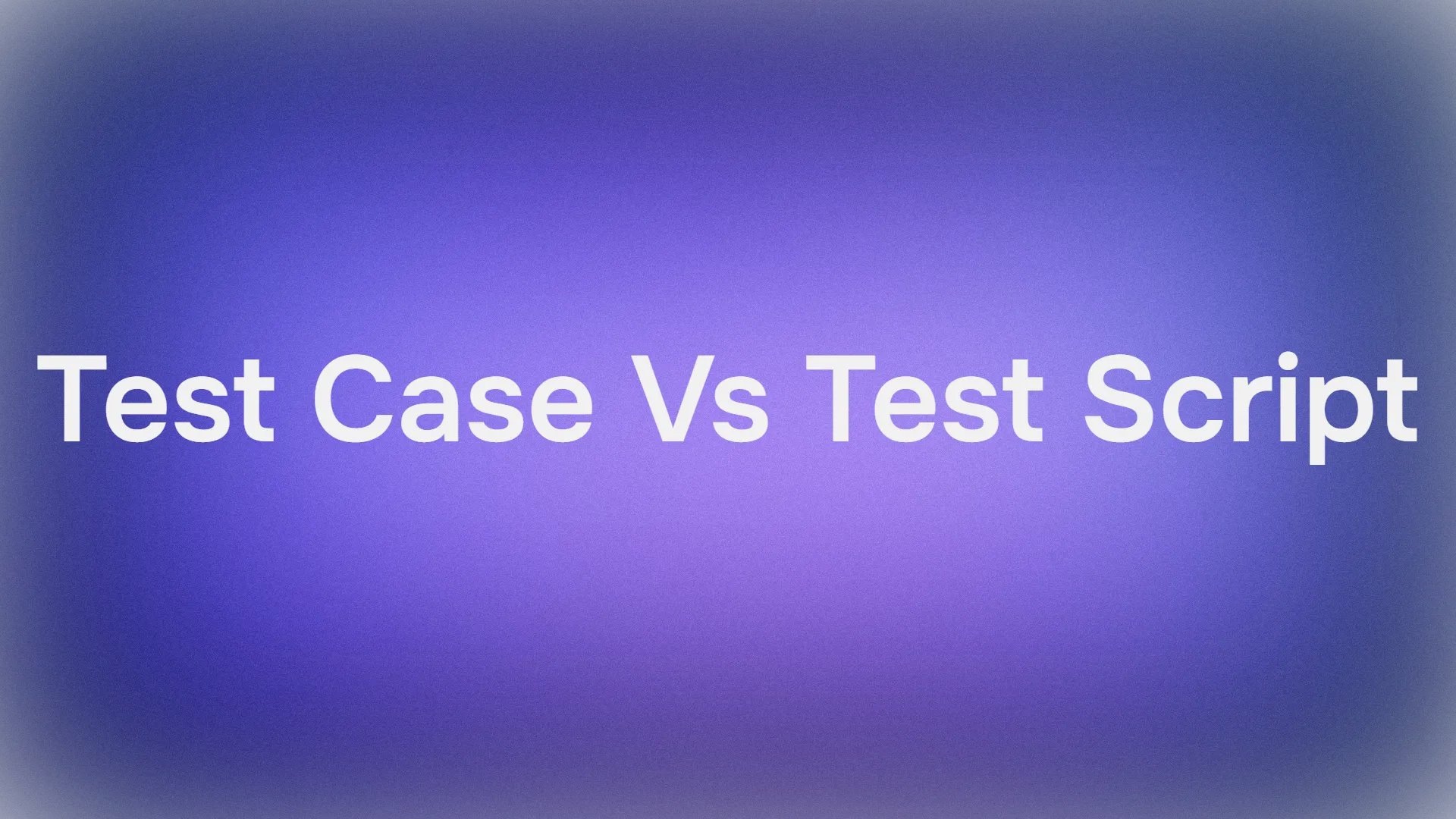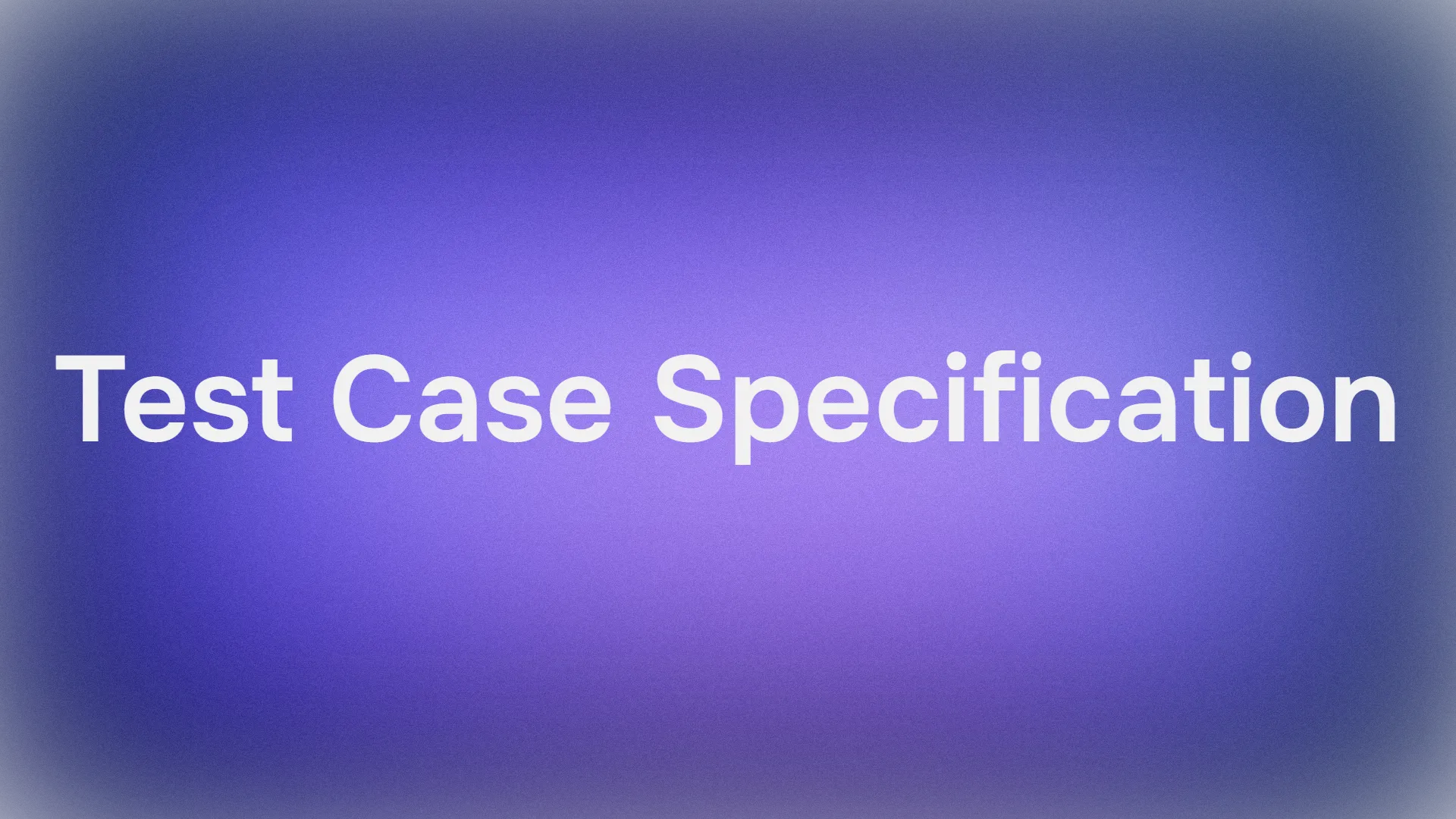Have you ever wrestled with crafting an OpenAPI spec from scratch? Then you know it’s a bit like assembling a puzzle—fun for some, tedious for others. But what if you had a super-smart AI sidekick to make it a breeze? Enter Gemini 2.5 Pro, Google’s latest brainy model that’s ready to help you write clean, accurate OpenAPI specs with minimal fuss. In this tutorial, I’m walking you through how to use Gemini 2.5 Pro to design APIs like a pro, all while keeping things chill and conversational. Ready to make API design your new favorite hobby? Let’s dive in!
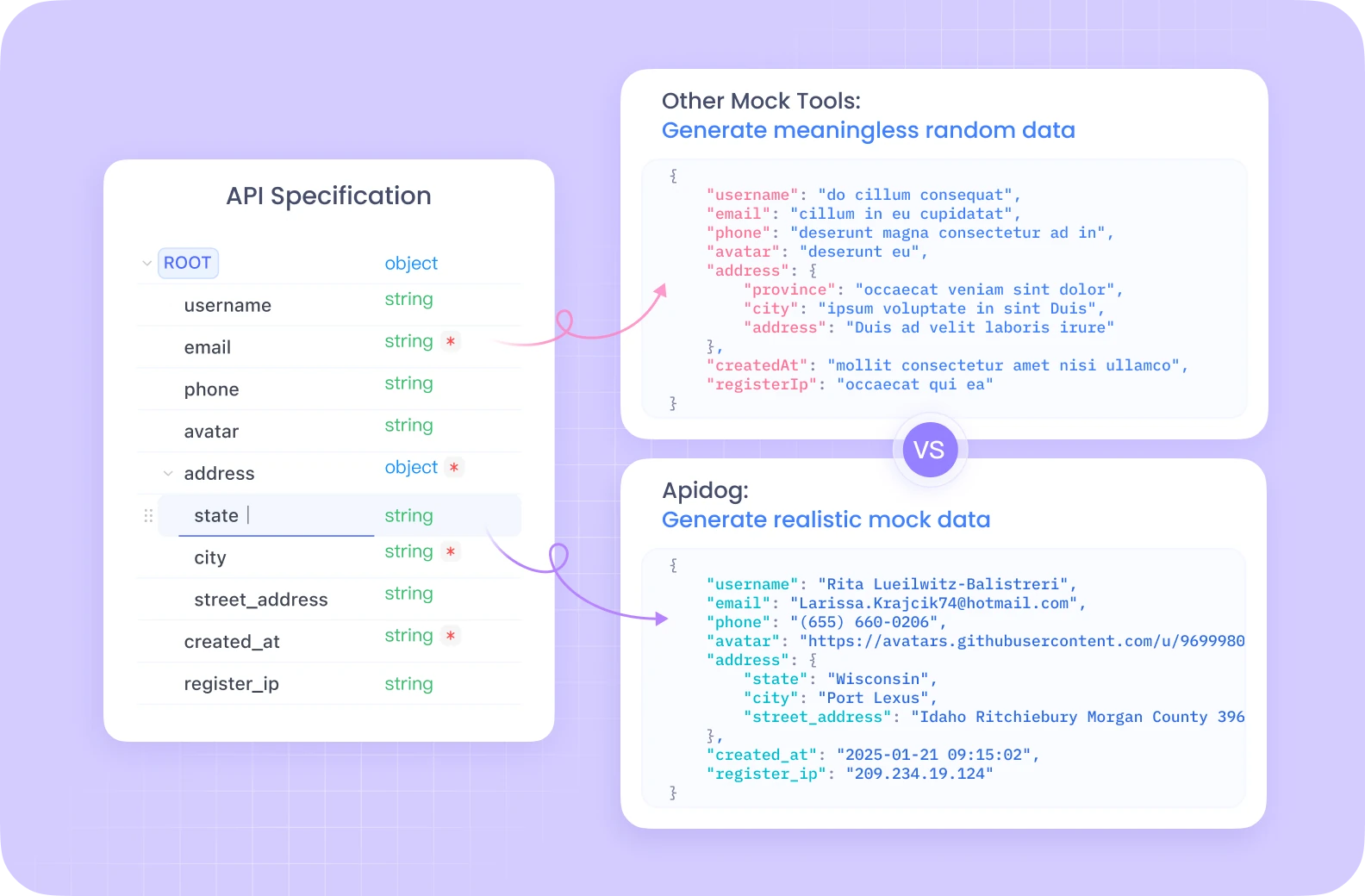
What’s OpenAPI and Why Use Gemini 2.5 Pro?
First off, let’s clear up what OpenAPI is. It’s a standard (formerly Swagger) for defining RESTful APIs in a machine-readable format—think JSON or YAML files that describe endpoints, parameters, responses, and more. It’s the blueprint that powers API docs, client SDKs, and testing tools. Writing one by hand? That’s hours of typing paths, schemas, and error codes—yawn.
So, why bring Gemini 2.5 Pro into the mix? This AI model, released in March 2025, is a coding beast with a 1-million-token context window (2 million in testing!). It’s dubbed a “thinking model,” meaning it reasons through tasks like a human, making it perfect for generating structured OpenAPI specs. Whether you’re sketching a new API or refining an existing one, Gemini 2.5 Pro can whip up YAML or JSON faster than you can say “endpoint.” Plus, it’s got a knack for catching edge cases—something even seasoned devs miss. Let’s see how it works!
Getting Started with Gemini 2.5 Pro for Writing OpenAPI
No need to mess with custom scripts—Gemini 2.5 Pro is ready to roll right from Google AI Studio. Here’s how to kick things off:
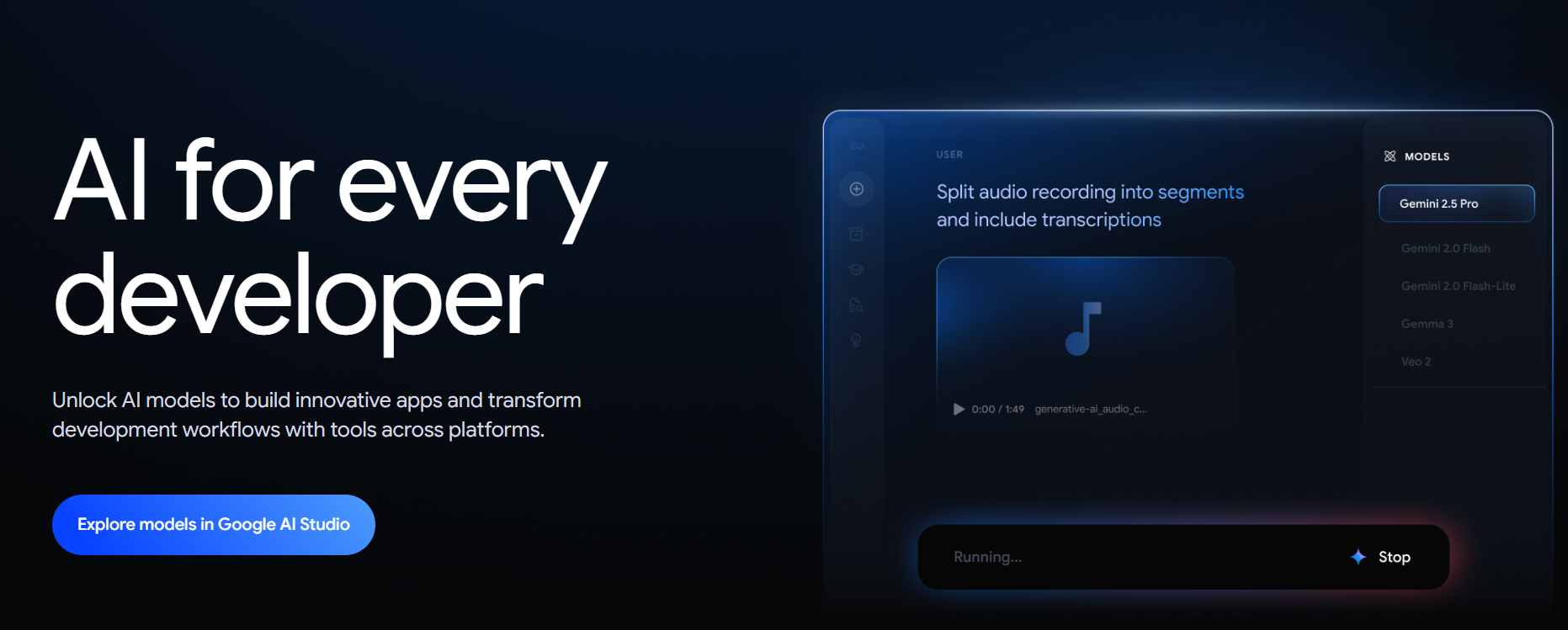
Step 1: Sign Up for Google AI Studio
Head to Google AI Studio and register with your Google account. It’s quick and free for light use (paid plans unlock higher limits if you’re going hard). Once you’re in:
- Click “Create API Key” and save it somewhere safe (not in a public repo, please!).
- Navigate to the model picker and select Gemini 2.5 Pro (look for “gemini-2.5-pro-exp-03-25” or similar).
- You’re now ready to chat with the model directly in the Studio’s interface—no coding required!
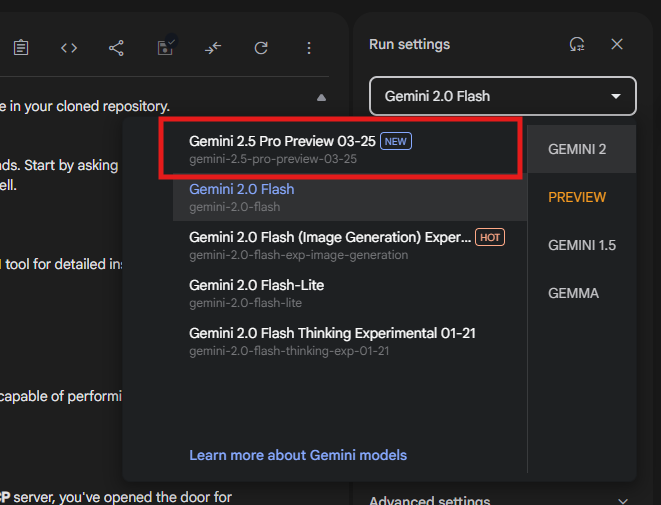
Step 2: Open the Prompt Interface
In Google AI Studio, you’ll see a text box where you can type prompts. This is where we’ll ask Gemini 2.5 Pro to craft our OpenAPI spec. The interface is super intuitive—just type, hit “Run,” and watch the magic happen. You can also tweak settings like temperature (stick with 0.7 for structured output) to fine-tune responses.
Writing Your First OpenAPI Spec with Gemini 2.5 Pro
Let’s create an OpenAPI spec for a to-do list API in YAML—simple but powerful. We’ll start from scratch and build it up.
Step 1: Drop a Clear Prompt
Gemini 2.5 Pro thrives on specific instructions, so let’s lay it out. In Google AI Studio’s prompt box, type:
>> You are an expert API designer. Generate a valid OpenAPI 3.0.2 specification in YAML for a to-do list API. Include:
- API info (title, version, description)
- Endpoints for creating, reading, updating, and deleting tasks
- Schemas for Task objects (id, title, completed, created_at)
- Example responses for each endpoint
- Basic error responses (e.g., 404, 400)
Ensure the spec is clean, follows OpenAPI best practices, and is ready to use.Hit “Run,” and Gemini 2.5 Pro will deliver something like this (shortened for clarity):
openapi: 3.0.2
info:
title: To-Do List API
version: 1.0.0
description: A simple API to manage to-do tasks
paths:
/tasks:
get:
summary: List all tasks
responses:
'200':
description: Successful response
content:
application/json:
schema:
type: array
items:
$ref: '#/components/schemas/Task'
post:
summary: Create a new task
requestBody:
required: true
content:
application/json:
schema:
$ref: '#/components/schemas/TaskInput'
responses:
'201':
description: Task created
components:
schemas:
Task:
type: object
properties:
id:
type: integer
title:
type: string
completed:
type: boolean
created_at:
type: string
format: date-time
TaskInput:
type: object
properties:
title:
type: string
completed:
type: boolean
This is a fantastic first draft—Gemini 2.5 Pro nailed the basics!
Step 2: Save It
Copy the YAML output from Google AI Studio and paste it into a file called todo-api.yaml. You can download it directly from the Studio interface if you prefer. This file’s your starting point, and we’ll polish it soon.
Rating Your OpenAPI Spec with Rate My OpenAPI
Before we tweak our spec, let’s see how it stacks up using Rate My OpenAPI. This nifty site scores your OpenAPI spec out of 100 and gives actionable advice to make it shine.
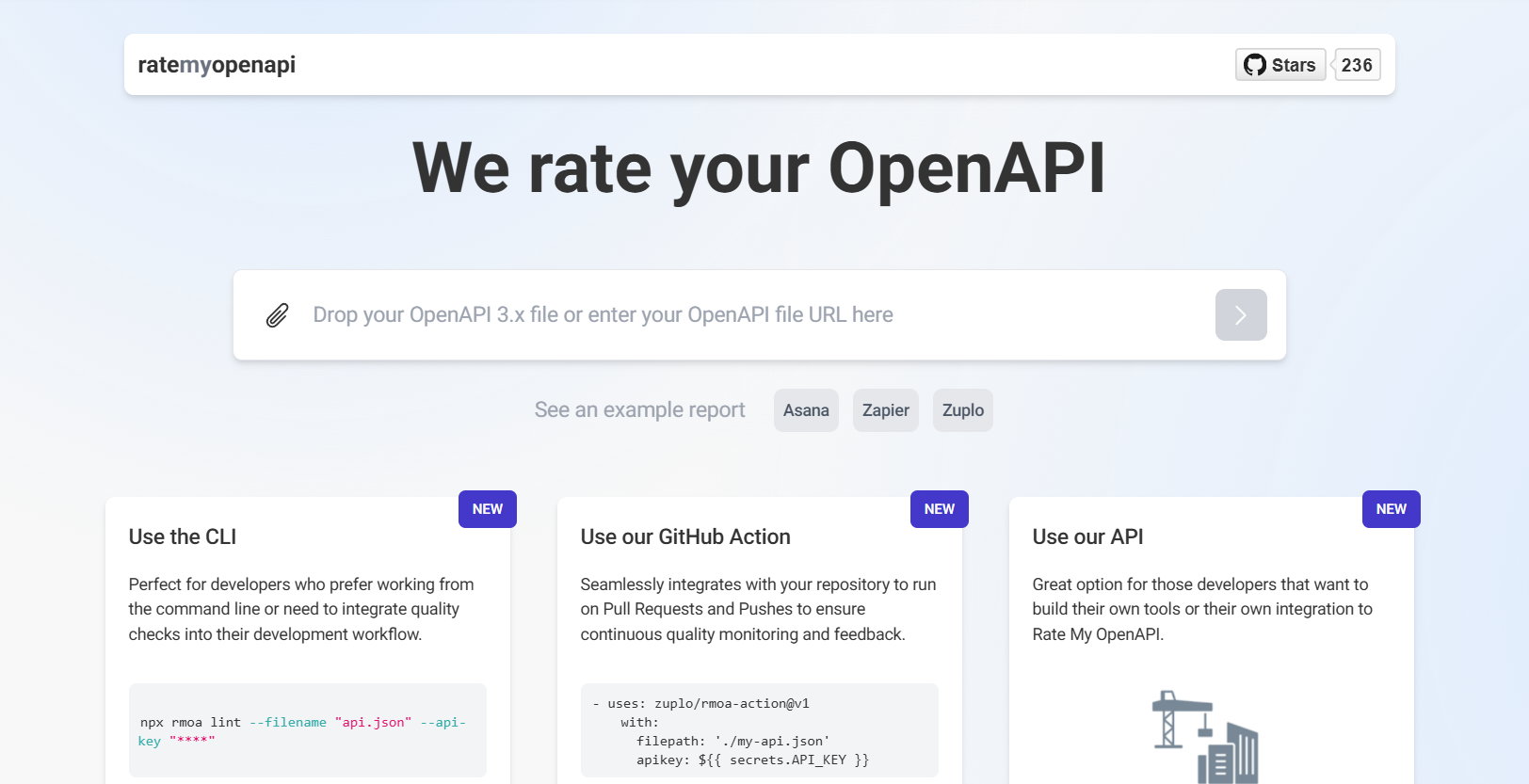
Step 1: Upload and Score
- Visit ratemyopenapi.com.
- Upload todo-api.yaml or paste the YAML directly.
- Hit “Analyze.” The site will crunch the numbers and spit out a score—say, 87/100—along with tips like:
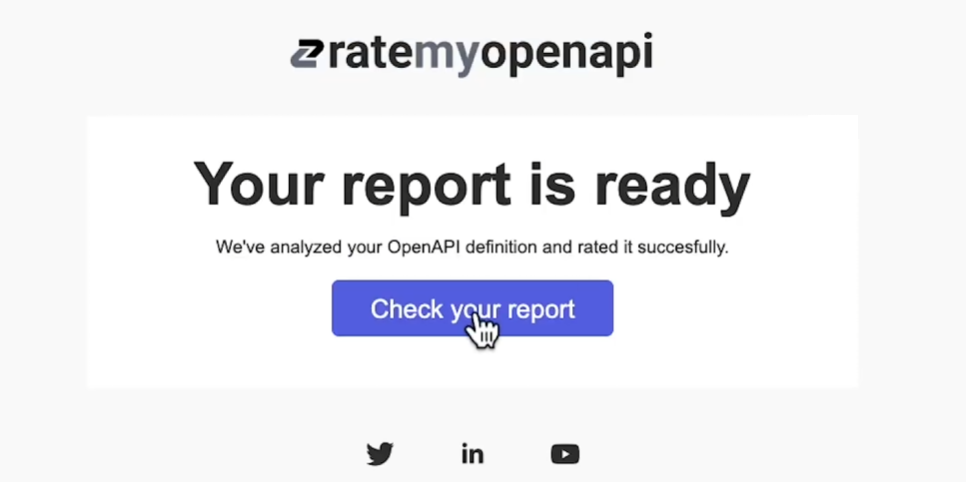
- “Add security schemes for authentication.”
- “Include more detailed descriptions for endpoints.”
- “Consider adding pagination parameters for GET /tasks.”
Step 2: Interpret the Feedback
An 87 is solid, but we want that A+! The feedback suggests our spec lacks auth and could use richer metadata. Maybe Gemini 2.5 Pro kept things minimal—let’s fix that.
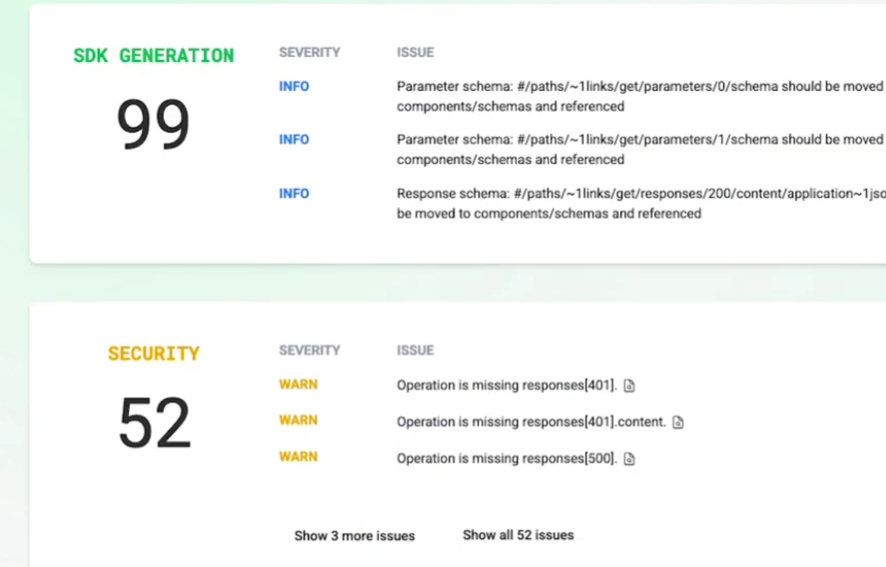
Refining Your OpenAPI Spec with Gemini 2.5 Pro
Armed with Rate My OpenAPI’s advice, let’s iterate. Back in Google AI Studio, we’ll feed Gemini 2.5 Pro new prompts to boost our score.
Prompt 1: Add Authentication
Type this in the prompt box:
>> Update my to-do list OpenAPI spec to include API key authentication. Add a security scheme and apply it to all endpoints. Keep the rest of the spec intact. Here’s the current spec:
[PASTE YOUR todo-api.yaml CONTENT]
Run it, and Gemini 2.5 Pro might add:
components:
securitySchemes:
ApiKeyAuth:
type: apiKey
in: header
name: X-API-Key
security:
- ApiKeyAuth: []This locks down your API—Rate My OpenAPI will love it!
Prompt 2: Beef Up Descriptions
Next, tackle those thin descriptions:
>> Enhance my to-do list OpenAPI spec with detailed descriptions for each endpoint (at least 2 sentences). Add a summary for the API info section. Here’s the current spec:
[PASTE YOUR UPDATED todo-api.yaml CONTENT]The result might include:
info:
title: To-Do List API
version: 1.0.0
description: A simple API to manage to-do tasks. Create, read, update, and delete tasks with ease, secured by API key authentication.
paths:
/tasks:
get:
summary: List all tasks
description: Retrieves all tasks in the system, sorted by creation date. Supports filtering by completion status via query parameters.These richer details should bump your score closer to 90.
Prompt 3: Add Pagination
Finally, let’s tackle pagination:
>> Update my to-do list OpenAPI spec to add pagination parameters (limit, offset) to the GET /tasks endpoint. Include example responses. Here’s the current spec:
[PASTE YOUR LATEST todo-api.yaml CONTENT]Gemini 2.5 Pro could add:
paths:
/tasks:
get:
parameters:
- name: limit
in: query
schema:
type: integer
default: 10
- name: offset
in: query
schema:
type: integer
default: 0
Re-upload to Rate My OpenAPI—boom, maybe a 98/100! If it’s still shy, tweak again (e.g., “Add rate limiting headers”).
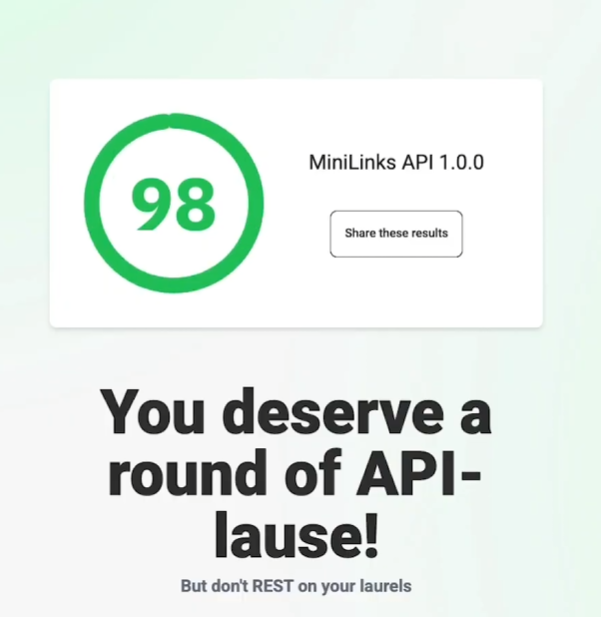
Handle Edge Cases
Want to cover more scenarios? Ask:
>> Add error responses for invalid task IDs and duplicate titles to the /tasks/{id} endpoint.
Gemini 2.5 Pro will weave in detailed 400 and 409 responses, keeping your spec robust.
Testing Your Polished OpenAPI Spec
Your spec’s looking sharp—time to test it!
Step 1: Mock It with Apidog
Import todo-api.yaml into apidog.com and fire up a mock server. Try a POST to /tasks:
{
"title": "Learn OpenAPI",
"completed": false
}
Apidog will fake a 201 response—great for prototyping without a real backend.
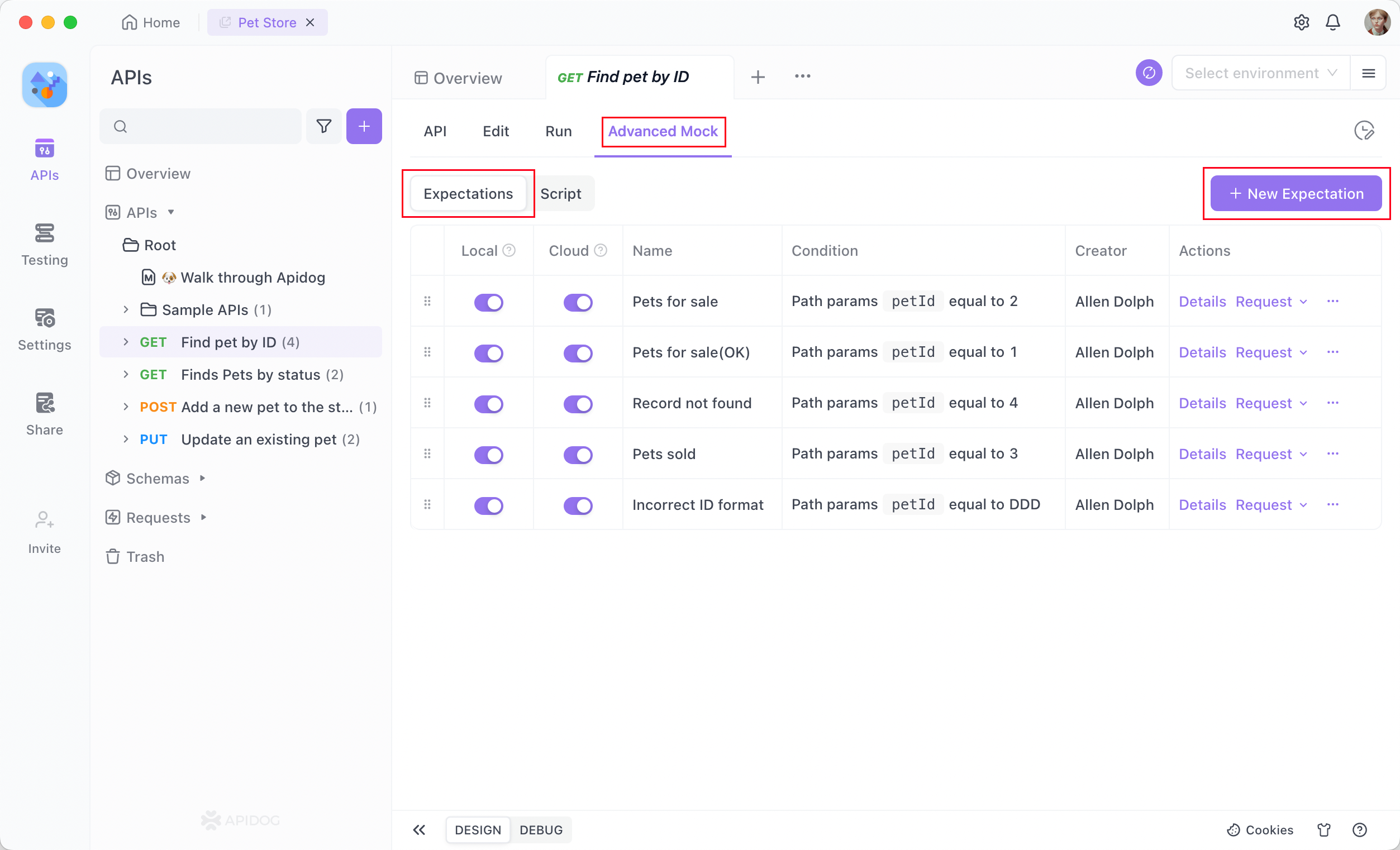
Step 2: Generate Docs
Use Apidog or Swagger UI to render your spec as interactive docs. Share the link with your team—they’ll be stoked at how pro it looks!
Why Gemini 2.5 Pro Rocks for OpenAPI Design
So, why pick Gemini 2.5 Pro over, say, typing it yourself or using another tool? Here’s the scoop:
- Speed: It cranks out specs in seconds, not hours.
- Accuracy: That massive context window means it groks complex requirements without forgetting details.
- Flexibility: YAML, JSON, auth, errors—it handles it all.
- Learning Curve: Even if you’re new to OpenAPI, Gemini 2.5 Pro guides you with clear output.
Compared to Claude or Copilot, Gemini 2.5 Pro’s reasoning shines for structured tasks like this. It’s like having a senior dev on call!
Pro Tips for OpenAPI Success with Gemini 2.5 Pro
- Be Specific: Vague prompts like “Make an API spec” get messy. Say exactly what endpoints or schemas you want.
- Iterate: Use Gemini 2.5 Pro to refine—small tweaks lead to big wins.
- Validate Early: Run your spec through Apidog or Swagger Editor to catch quirks.
- Explore Docs: Check ai.google.dev for more Gemini 2.5 Pro tricks.
Conclusion
And there you have it—you’re now a pro at writing OpenAPI specs with Gemini 2.5 Pro! From spinning up a to-do API to adding auth and testing it, you’ve seen how this AI makes API design fun and fast. Whether you’re building the next big app or just geeking out, Gemini 2.5 Pro is your trusty wingman. So, what API are you designing next? Maybe a pet store or a weather app? And don’t forget to play with your spec on apidog.com for extra polish.
